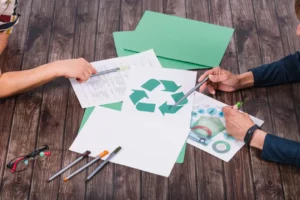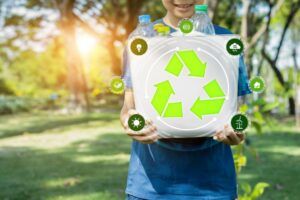Introduction
Waste made of plastic has developed into a worldwide problem that has an effect on our communities, ecosystems, and the environment. At a time when we are struggling to deal with the effects of plastic pollution, it is essential that we find innovative solutions in order to create a future that is more sustainable. Plastics are being converted into valuable resources by AP&J Recycling, a pioneering force in the industry. They are at the forefront of this transformation. AP&J’s pioneering initiatives, cutting-edge recycling technologies, and the company’s goal for a circular economy are all topics that are discussed in depth in this blog post.
The Plastic Waste Challenge
Waste made of plastic is not limited by national boundaries. It poses a threat to the quality of the environment and the health of ecosystems, and it has an impact on both developed and developing economies. New information suggests that the United States, which was formerly thought to be able to properly manage its plastic trash, may actually be one of the leading contributors to the pollution of coastal areas caused by plastic. Not only does improper management of plastics result in the waste of precious materials, but it also causes damage to our world.
Advanced Recycling: A Game-Changer
The traditional plastic recycling rates continue to be low, which is something that AP&J Recycling is aware of. However, recycling rates in the United States have remained unchanged at 9% since 2012, whereas recycling rates around the world range between 14% and 18%. Recycling efforts are hampered by a number of technical hurdles, including contamination, polymer compositions that are complex, and the need to customize materials for particular purposes.
AP&J, on the other hand, views improved recycling technology as a potential that has not yet been fully exploited. Here is how it operates:
- Contaminant-Free Polymers: AP&J focuses on improving the quality of plastics collected for recycling. By minimizing contamination, they ensure that recycled polymers meet stringent standards.
- Customization and Reuse: AP&J explores ways to customize plastics for specific applications without compromising recyclability. This approach encourages collection, separation, and reuse.
- Complex Plastics Solutions: AP&J tackles the complexity of plastics made from multiple polymers and additives. Their research aims to simplify recycling processes for these intricate materials.
- Incentivizing Collection: AP&J advocates for packaging fees or recycled-content legislation to boost plastic collection rates. By increasing the value of after-use plastic, leakage from the collection system can be minimized.
Plant-Based Alternatives
Aside from conventional plastics, AP&J also makes investments in feedstocks derived from plants. The use of sugars derived from plants, such as glucose, allows them to substitute fossil fuels as a source of raw materials. Plastics that are made from biomass are beneficial to a circular economy because they do not increase the amount of carbon that is brought into the cycle.
The Vision Ahead
The objective of AP&J Recycling is to create a society in which wasted plastic is not considered waste but rather a useful resource. Through the development of recycling technologies, the enhancement of waste management infrastructure, and the promotion of consumer education, they are paving the path for a more environmentally friendly future. As the need for plastics around the world continues to climb, the commitment that AP&J has made to sustainability is more important than it has ever been.
AP&J Recycling invites you to join them on this transforming path toward a circular economy, which is a system in which plastics are given new life and our planet is able to breathe harder.







